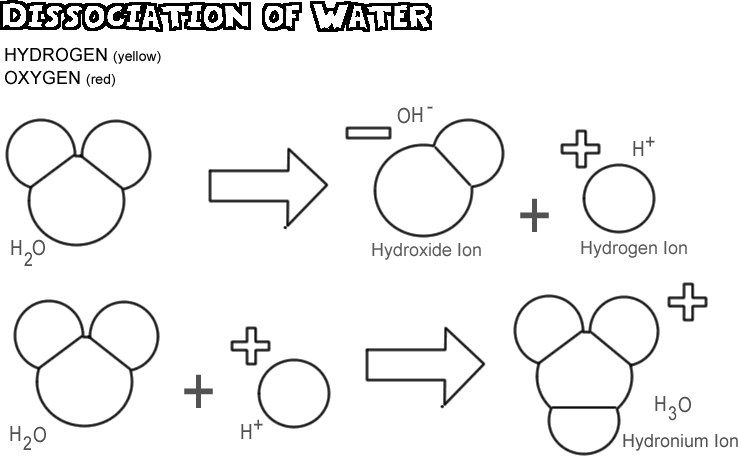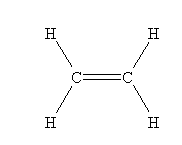


 Alkanes
Alkanes
k so last class we started learning about molecular polarity and intermolecular bonds, but we didn't get the chance to get to hydrogen bonds so thats what we talked about the most today
H-N, H-O, H-F
now just to recap all the the types of bonding forces:
one example we went through was putting some molecules in order of the strongest bond to the weakest bond. the ones we used were:
1. C2H5OH: 26 electrons and a bp of 78 degrees Celsius
2. CH3OH: 18 elestrons with a bp of 65 degrees Celsius
3. C2H6: 18 elesctrons with a bp of -89 degrees Celsius
4. CH4: 10 electrons with a bp of -161 degrees Celsius
now that we had finished talking about molecular bonds, we discussed ions in solutions for the rest of class
we went through some concentration examples that go back to our stoichiometry section, so its basically using our old knowledge to kind of figure out new examples. I won't write out the examples bacause they would just be WAY too confusing using blogger. but instead, i have an awesome video! YAY!
it says 20 second but its more like a minute and a half. still, this does a really good job of explaining hydrogen bonding!
thats all for now!





 Examples
Examples

Lewis Dot Structure
we practiced drawing lewis dot diagrams
so thats pretty much all we did today! lots of notes and lots of drawing :P





Lavoisier (later 1700s)
Proust (1799)
Dalton (early 1800s)
J.J. Thompson (1850s)
Rutherford (1950)
i just had to put these guys in here cuz it is a prime example of how white kids can't rap and how i should never attempt it :P they mention dalton, thompson, rutherford and some other guy i dont know. ill explain Bohr after
oh look more white kids doing a terrible job of rapping! hahah at least they get his story across.
 Since you need more than the given amount of Cl2 to fully react the P4, Cl2 is the limiting reagant.
Since you need more than the given amount of Cl2 to fully react the P4, Cl2 is the limiting reagant.
 For 10g of hydrogen, we need 80 g of oxygen, so
For 10g of hydrogen, we need 80 g of oxygen, so 28.1 g of water will be produced.
28.1 g of water will be produced.
 .
. 
example:
if .15 mol of methane reacts with oxygen, how many moles of water are produced?
first we find the balanced equation:
CH4 + 2O2 -> CO2 + 2H2O
then we find out how many moles of water are needed for the equation by using the formula:
(what you're given) X (what you need)/(what you know)
so... (.15 moles of methane) X (2 moles of water)/(1 mole of methane) = .30 moles of H2O
so by using the quantity we are given, we can find out any other of the factors in the equation
we can also take it one step farther by multiplying the mole ratio we found by the molar mass of the chemical we are trying to find the mass of
for example we can take the .30 moles of water and multiply that by its molar mass (18.02 g/mol) and we find that 5.4 g of water has been used in the equation.
so thats all the notes for today!
To know the amount of energy released three things must be known.
1) Temperature change (▲T) - measured with a thermometer
2) Amount of water (kg) ..... 1 g = 1 mL.... 1kg = 1000mL - measured with a scale
3) Specific heat capacity - how much heat a given substance can hold
water can hold 4.19 kj/kg °C
Equation
▲H= mC▲T
▲H= enthalpy change (kj)
m= mass of water (kj)
C = specific heat capacity (kg/kj °C)
▲T= change in temperature (°C)
Molar Enthalpy - Change in heat for each mole reacted
If you burn 0.315 moles of hexane (C6H14) in a bomb calorimeter containing 5.65 kg of water, what’s the molar heat of combustion of hexane is the water temperature rises 55.40 C?
▲H = mC▲T
▲H = (5.65 kg)(4.19 kj/kg0C)(55.40 C)
▲H = 1311.5 kJ
= 1312 kJ
If you burn 22.0 grams of propane (C3H8) in a bomb containing 3.25 kg of water, what’s the molar heat of combustion of propane if the water temperature rises 29.50 C?
▲H = mC▲T
▲H = (3.25 kg)(4.19 kj/kg0C)(88.50 C)
▲H = 1205.15 kj
▲H = 1205 kj
Enthalpy Diagrams
Exothermic
Endothermic
wanna learn more about enthalpy change? click here....... you know you waaaaaannaa
Mg + O2 - MgO
2Mg + O2 - 2MgO
here are some acids that me are going to have to remember for the acid neutralization reactions: